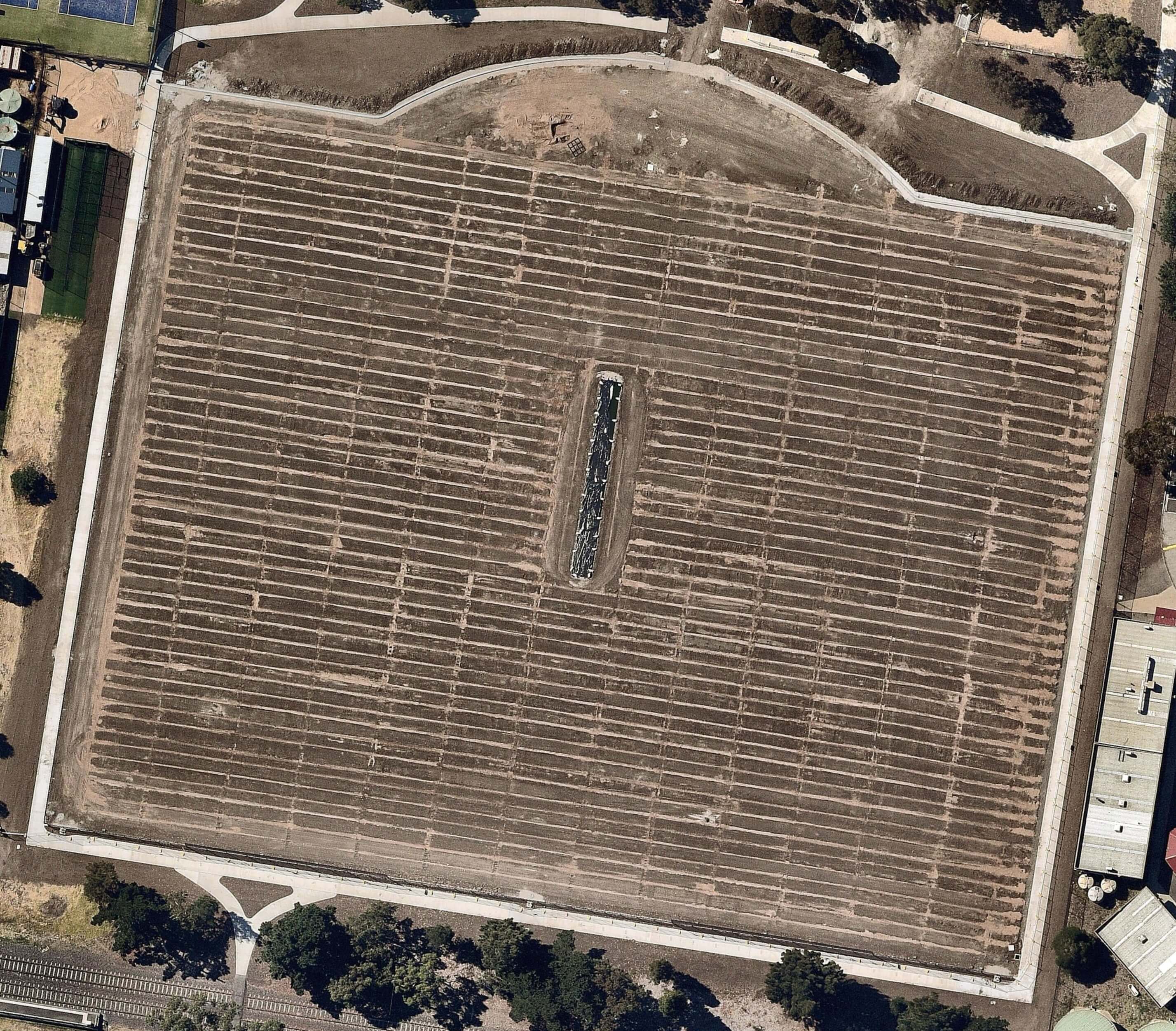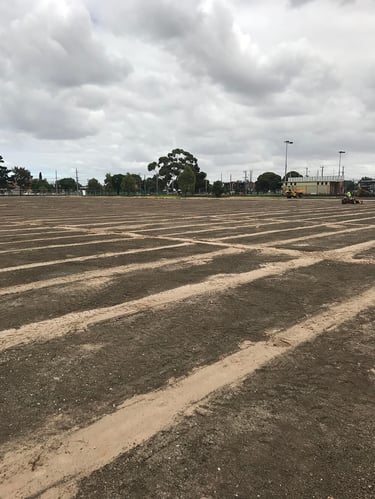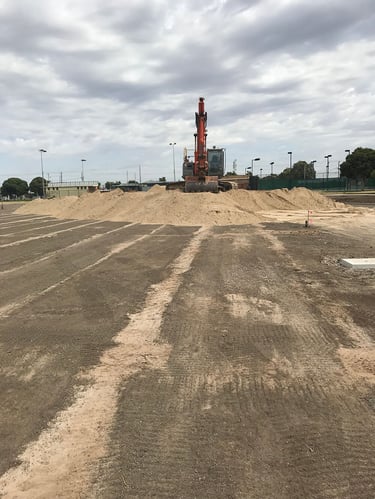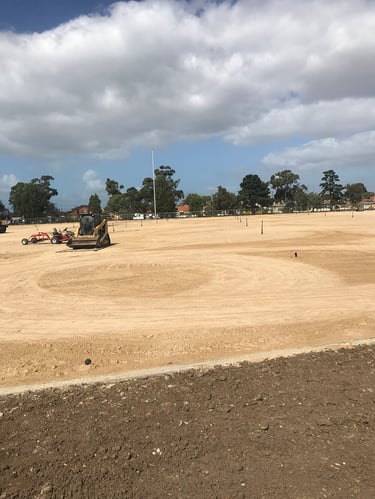What is a sand carpet profile?
Winter sports cause the most damage on natural turf fields due to wet weather, cool conditions and slow grass growth and recovery. Wet soils and high traffic cause rapid turf deterioration that often results in a muddy and unstable surface. As the surface becomes soft and muddy the skills of the game are adversely affected as is the attractiveness of the game. Having a well-drained profile is crucial in providing a dry and durable surface that has good recovery from wear and allows for a high standard of play.
To provide a well-drained sportsfield not only relies on having a subsoil drainage system but also a high sand content rootzone that allows for the rapid infiltration of water. In Australia, there are three variations of sand profiles including:
- Sand carpet profile.
- Deep sand profile with closely spaced subsoil drains.
- Deep sand profile with subsoil drains and a gravel drainage layer.
What is a sand carpet sportsfield profile?
A sand carpet profile consists of:
- A network of closely spaced sand slit drains.
- Widely spaced pipe collector drains.
- A 100mm sand layer across the entire surface.
Why is sand carpet sportsfield profile important?
Improved drainage in a natural turf field of play through the use of a sand carpet construction has several important functions:
- Provides a free-draining and well aerated profile that has good resistance to compaction.
- Water infiltration is UNIFORM across the entire surface.
- Provides consistent growing conditions for strong turf growth.
- Increases the playability of the sportsfield and the potential hours of use.
- The playing surface has more uniform and consistent firmness.
Designing a sand carpet profile can have different variations and the sportsfield drainage capability can be manipulated through; altering the spacing of the sand slits, lateral drains and the depth of the sand carpet and the saturated hydraulic conductivity of the sand.

Sand slits and collectors ready for sand carpet
What are the advantages of a sand carpet profile?
The advantages of installing a sand carpet profile over a full depth sand profile (e.g. 250mm depth) are:
- Ideal method for sites where;
- Minimal excavation is permitted (e.g. due to a shallow water table or acid sulphate soils).
- Designated flood retention areas where the existing RL cannot be altered.
- Where there is minimal fall for sub-soil drainage systems to link into existing stormwater infrastructure.
- Lower cost.
- Less work involved. While there is less work involved it does require specialised equipment and an experienced contractor.
- Less excavated material that has to be disposed of.
- The sand carpet profile can be added to an existing sand slit drainage system. Note: where an existing system is to be utilised it requires a detailed investigation to establish the functionality of the system.
What are the disadvantages of a sand carpet profile?
The disadvantages of installing a sand carpet profile are similar to any sand profile:
- Depth of the sand carpet is shallow and the sand slit spacing is critical in ensuring adequate drainage.
- Greater intensity of subsoil drains.
- During extreme rainfall events the field may not be suitable for play immediately after the rain stops.
- Shallower sand depth has reduced water retention and relies on grass roots growing into the subsoil.
- Increased nutrient leaching.
- As with any sand profile, if the turf wears out the surface will be less stable.


Example of sand slits and collectors drains installed (left) and a sand carpet being installed (right)


Example of a sand carpet levelled and ready to grass (left) and of the grassing of Field of Play (right)
Tips and reminders for a sand carpet profile
In making a decision whether to construct a sand carpet profile consider the following points:
- What are the site constraints?
- What is the required standard for the playing surface?
- Is it the best option for this site?
- Do the calculations – compare the drainage capability of the sportsfield with different sand slit spacings and saturated hydraulic conductivity of the sand and compare this against the local rainfall patterns. Once this is done the system can be designed and more accurately costed.
- Selecting and testing the most appropriate sand for the project.
Sand carpet profiles are a type of sand profile that utilises a thin sand blanket over a network of closely spaced sand slit drains. Sand carpet profiles are a lower cost option for sites that have limitations such as shallow grades or poor subsoil conditions.
You can learn more about the differences between sand slit drainage system and sand carpet profile here.
SPORTENG can provide a detailed site evaluation for constructing your sportsfields and assist in developing a strategy to ensure the best possible outcome for the site.
Contact us now for more information.

